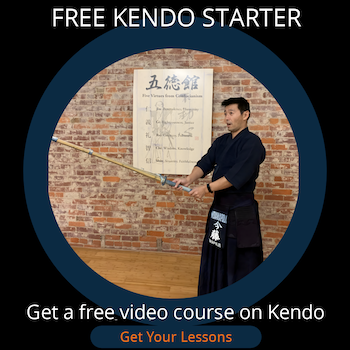Need Kendo Instructions?
You Got It!
You Got It!
Bow to shomen: formality or not
by Olga
(Ukraine)
A month ago I visited a dojo where they do not bow to shomen in the beginning and end of training. The instructor of the dojo thinks the bow is a kind of unnecessary formality.
Do you think such things are formality only and can be skipped depending on dojo or it is a valuable part of kendo? Have you ever met a dojo where they do not bow to shomen in Japan?
Answer: Thank you for your question. Bowing to the shomen is used to be bowing to “shinzen”. It is a part of Shintoism. At a traditional dojo, they still have a shrine of a martial god. If you have a difficulty with grasping the idea of “god” (Shintoism), think it as a guardian of the martial arts.
Since we are losing many traditional dojos and using a gym as a dōjō even in Japan, we don't have a shrine at the dōjō. And also for religious reasons, some dojos do not have a shrine. That is why we don't use shinzen anymore. And shomen means “the front”.
But to me it is very important to bow to the shomen (or shinzen), because we are bowing to the dojo. What that mean is we are paying respect and appreciation to the place we train at. And we are also paying respect and appreciation to the people who passed their knowledge on to us.
Personally I don't think it is a good idea to modify any of these because there are reasons. Once we start removing things from kendo based on our own personal perspectives, kendo
For example, many people ask why they cannot switch their hands when they hold a shiai. The answer is simple. Because we have a history behind it. (Please refer to a paragraph starting with "Can we switch our hands?" in "Why is the left hand more dominant in kendo???")
And of course practitioners must know the concept of kendō and think about why people practice kendo. What is the purpose of kendō? If we don't think about it deeply and thoroughly understand what kendo really is, it is very dangerous to modify or replace something with someone else.
A person who has done judo for all his life told me this story.
This person from a certain country did not bow to his opponent in a tournament. Of course referees told him to bow. He didn't bow. And the main just told him that if he wouldn’t bow he would be disqualified. And his coach came out and told the judge pointing at the rulebook and said, "it doesn't say we have to bow to our opponent in the rulebook."
Then they added "bowing to the opponent at the beginning and the end of the match". What do you think?
Things have to change and things are changing. We may have to change something in kendo because of internationalization. But we really have to be careful with what we change; otherwise, people do things because they are written in the rulebook not because they pay respect to the opponents.
Click here to read or post comments

